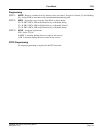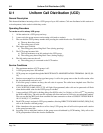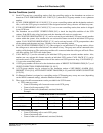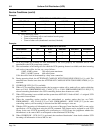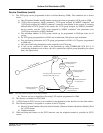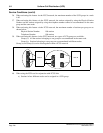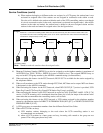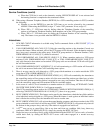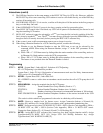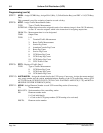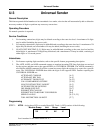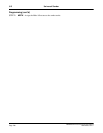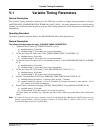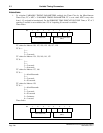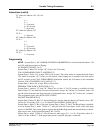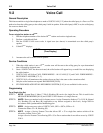
NEAX2400 IPX Feature Programming Manual
NDA-24297, Issue 1
Page 783
Uniform Call Distribution (UCD) U-1
Interactions (cont’d)
13. The DND key functions in the same manner as the BUSY OUT key for UCD calls. However, while the
BUSY OUT key allows non-controlling UCD stations to receive calls dialed directly, use of the DND key
restricts all incoming calls.
14. If OVERFLOW-UCD [O-13] is in service, overflow will take place if all the stations in the first group are
busy or in the Busy Out state.
15. If the OVERFLOW-UCD [O-13] group is also busy, queuing to the first group takes place.
16. Once BUSY OUT cancel code is activated, any UCD call in queue will automatically be directed to and
ring the cancelling UCD station.
17. BUSY OUT set/cancel cannot be activated by a D
term
user from the idle (on-hook) condition if the My-
line is in use by another D
term
user. The D
term
user must first go off-hook or press the SPEAKER key (even
though no line will actually be seized), before pressing the BUSY OUT set/cancel key.
18. If the system is reset, traffic measurement requests are no longer in service.
19. When using a Phantom Number for a UCD controlling station, consider the following:
a.) Whether to use the Phantom Number to start the UCD hunt or not can be selected by the
command APHN. When using the Phantom Number, assign “1” in the “PH” parameter. If not,
assign “0”.
b.) When “PH = 1”: UCD hunt starts by dialing either the station number of the controlling station or
its Phantom No. Both numbers can be the UCD group number.
c.) When “PH = 0”: UCD hunt starts by dialing the station number of the controlling station only.
The feature is not provided when the Phantom Number is dialed.
Programming
STEP 1: ASYD - System Data 1, Index 60, bit 3. Selection of UCD Queuing:
0/1 = UCD Queuing is provided/Not provided
System Data 1, Index 70, bit 6. Designation of announcement trunk used for Delay Announcement-
UCD service: 0/1=Common/Per UCD group
STEP 2: ASYDL - System Data SYS 1, Index 804, bit 0
0/1 = BT/RBT is sent to a caller when an attendant console transfers the call to UCD group that is all
busy.
STEP 3: ASHU/ASHUL - Assign the required data for the UCD group:
TN/UGN: Tenant Number/User Group Number (Fixed to “1”)
STN/TELN: Station Number/Telephone Number (max: 16 digits)
CNT: Number of stations to be entered (recommended maximum of 100 stations)
EDIT STN/EDIT TELN: Station Numbers/Telephone Numbers of the stations included in the UCD
group
(The order in which stations are programmed is the order in which they will be hunted.)
STEP 4: ANPD - Reserve a number level for feature access. Assign Connection Indexes of Normal (N),
Hooking (H), and Busy (B). Assign NND in accordance with a predetermined numbering plan.
STEP 5: ASPA - Assign an access code to UCD BUSY OUT. SRV = SSCA (Service Code Appendix), SIDA =
50 BUSY OUT set, SRV = SSCA (Service Code Appendix), SIDA = 51 BUSY OUT cancel.
Connection Status Indexes CI = N, Normal (N) and CI = H, Hooking (H).
STEP 6: AKYD - Assign BUSY OUT set/cancel key (same key does both; toggles function on/off). Assign
Type:Function:UCD BUSY OUT [19]. Assign UCD Call Waiting Indication key. Assign
Type:Function:CALL WAITING LAMP [47].



